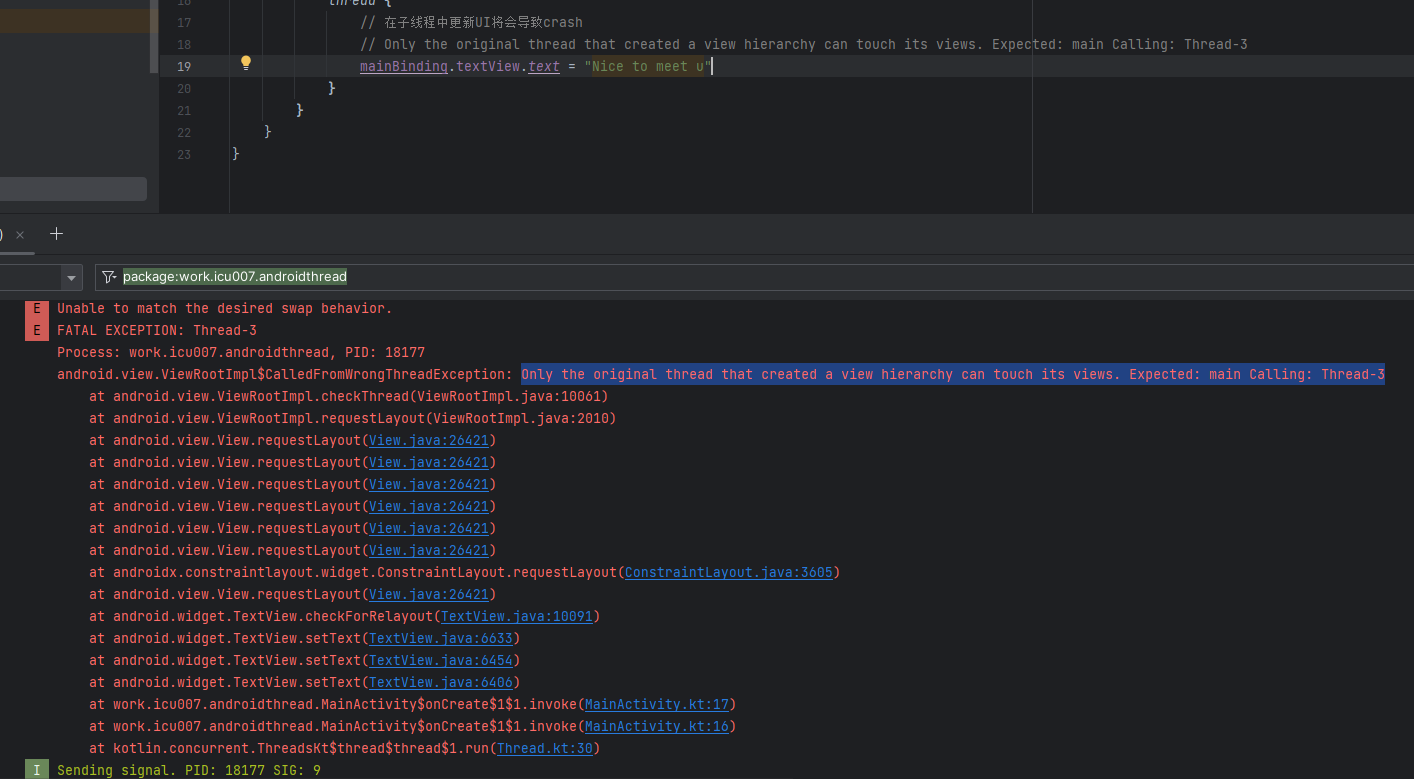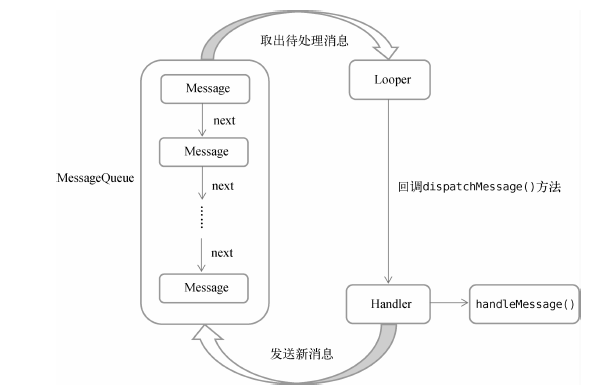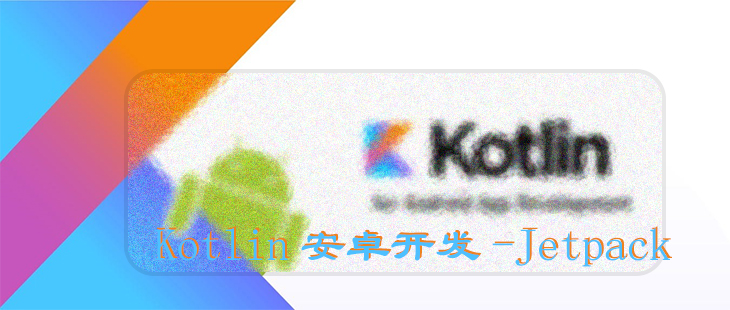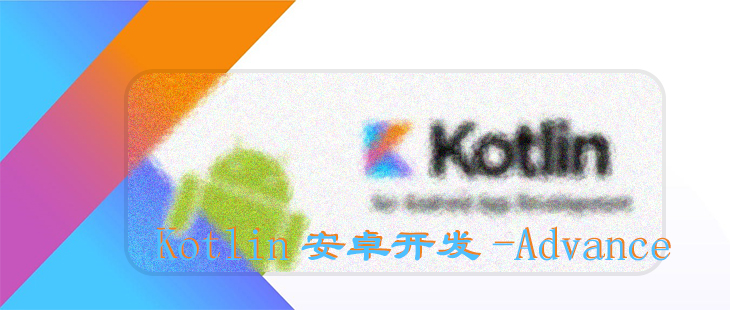Kotlin安卓开发-Service
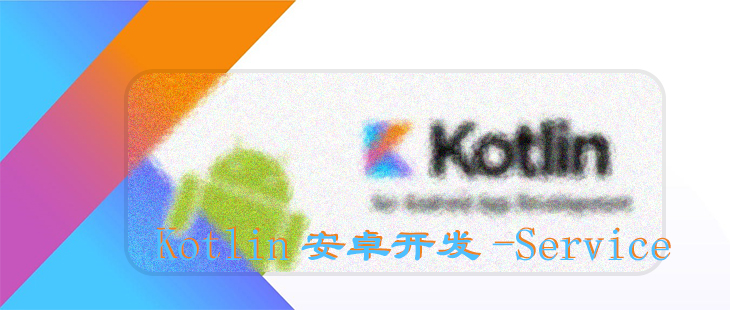
Kotlin安卓开发-Service
Rookie_l一、什么是Service
Service是Android中实现程序后台运行的解决方案,它非常适合执行那些不需要和用户交互而且还要求长期运行的任务。Service的运行不依赖于任何用户界面,即使程序被切换到后台,或者用户打开了另外一个应用程序,Service仍然能够保持正常运行。不过需要注意的是,**Service并不是运行在一个独立的进程当中的,而是依赖于创建Service时所在的应用程序进程。当某个应用程序进程被杀掉时,所有依赖于该进程的Service也会停止运行。**
另外,也不要被Service的后台概念所迷惑,实际上Service并不会自动开启线程,所有的代码都是默认运行在主线程当中的。也就是说,我们需要在Service的内部手动创建子线程,并在这里执行具体的任务,否则就有可能出现主线程被阻塞的情况。
二、Android多线程编程
当我们需要执行一些耗时操作,比如发起一条网络请求时,考虑到网速等其他原因,服务器未必能够立刻响应我们的请求,如果不将这类操作放在子线程里运行,就会导致主线程被阻塞,从而影响用户对软件的正常使用。
2.1 多线程的基本用法
Android多线程编程其实并不比Java多线程编程特殊,基本是使用相同的语法。比如,定义一个线程只需要新建一个类继承自Thread,然后重写父类的run()方法,并在里面编写耗时逻辑即可,如下所示:
1 | class MyThread: Thread() { |
那么该如何启动这个线程呢?其实很简单,只需要创建MyThread的实例,然后调用它的start()方法即可,这样run()方法中的代码就会在子线程当中运行了,如下所示:
1 | MyThread().start() |
当然,使用继承的方式耦合性有点高,我们会更多地选择使用实现Runnable接口的方式来定义一个线程,如下所示:
1 | class MyThread: Runnable() { |
如果使用了这种写法,启动线程的方法也需要进行相应的改变,如下所示:
1 | val myThread = MyThread() |
可以看到,Thread的构造函数接收一个Runnable参数,而我们创建的MyThread实例正是一个实现了Runnable接口的对象,所以可以直接将它传入Thread的构造函数里。接着调用Thread的start()方法,run()方法中的代码就会在子线程当中运行了。
当然,如果你不想专门再定义一个类去实现Runnable接口,也可以使用Lambda的方式,这种写法更为常见,如下所示:
1 | Thread { |
以上几种线程的使用方式你应该不会感到陌生,因为在Java中创建和启动线程也是使用同样的方式。而Kotlin还给我们提供了一种更加简单的开启线程的方式,写法如下:
1 | thread { |
这里的thread是一个Kotlin内置的顶层函数,我们只需要在Lambda表达式中编写具体的逻辑就可以了,连start()方法都不用调用,thread函数在内部帮我们全部都处理好了。
2.2 在子线程中更新UI
和许多其他的GUI库一样,Android的UI也是线程不安全的。也就是说,如果想要更新应用程序里的UI元素,必须在主线程中进行,否则就会出现异常。
举个栗子🌰:
我们增加两个控件,一个Text View,一个Button。我们在捕获到Button的点击事件后开启一个线程,在线程中更新Text View的内容。
1 | package work.icu007.androidthread |
运行程序会发现,程序会崩溃,报错信息为:
可以看出是由于在子线程中更新UI所导致,由此证实了Android确实是不允许在子线程中进行UI操作的。但是有些时候,我们必须在子线程里执行一些耗时任务,然后根据任务的执行结果来更新相应的UI控件,该怎么办呢。
Android提供了一套异步消息处理机制,完美地解决了在子线程中进行UI操作的问题。
代码如下:
1 | package work.icu007.androidthread |
这里我们先是定义了一个整型变量updateText,用于表示更新TextView这个动作。然后新增一个Handler对象,并重写父类的handleMessage()方法,在这里对具体的Message进行处理。如果发现Message的what字段的值等于updateText,就将TextView显示的内容改成“Nice to meet you”。下面再来看一下“Change Text”按钮的点击事件中的代码。可以看到,这次我们并没有在子线程里直接进行UI操作,而是创建了一个Message(android.os.Message)对象,并将它的what字段的值指定为updateText,然后调用Handler的sendMessage()方法将这条Message发送出去。很快,Handler就会收到这条Message,并在handleMessage()方法中对它进行处理。注意此时handleMessage()方法中的代码就是在主线程当中运行的了,所以我们可以放心地在这里进行UI操作。接下来对Message携带的what字段的值进行判断,如果等于updateText,就将TextView显示的内容改成“Nice to meet you”。
来分析一下Android异步消息处理机制到底是如何工作的。
2.3 解析异步消息处理机制
Android中的异步消息处理主要由4个部分组成:Message、Handler、MessageQueue和Looper。其中Message和Handler在上一小节中我们已经接触过了,MessageQueue和Looper相对来说还是全新的概念。
Message
Message是在线程之间传递的消息,它可以在内部携带少量的信息,用于在不同线程之间传递数据。上一小节中我们使用到了Message的what字段,除此之外还可以使用arg1和arg2字段来携带一些整型数据,使用
obj字段携带一个Object对象。Handler
Handler顾名思义也就是处理者的意思,它主要是用于发送和处理消息的。发送消息一般是使用Handler的
sendMessage()方法、post()方法等,而发出的消息经过一系列地辗转处理后,最终会传递到Handler的handleMessage()方法中。MessageQueue
MessageQueue是消息队列的意思,它主要用于存放所有通过Handler发送的消息。这部分消息会一直存在于消息队列中,等待被处理。每个线程中只会有一个MessageQueue对象。Looper
Looper是每个线程中的
MessageQueue的管家,调用Looper的loop()方法后,就会进入一个无限循环当中,然后每当发现MessageQueue中存在一条消息时,就会将它取出,并传递到Handler的handleMessage()方法中。每个线程中只会有一个Looper对象。了解了Message、Handler、MessageQueue以及Looper的基本概念后,我们再来把异步消息处理的整个流程梳理一遍。
首先需要在主线程当中创建一个Handler对象,并重写
handleMessage()方法。然后当子线程中需要进行UI操作时,就创建一个Message对象,并通过Handler将这条消息发送出去。之后这条消息会被添加到MessageQueue的队列中等待被处理,而Looper则会一直尝试从MessageQueue中取出待处理消息,最后分发回Handler的handleMessage()方法中。
由于Handler的构造函数中我们传入了
Looper.getMainLooper(),所以此时handleMessage()方法中的代码也会在主线程中运行,于是我们在这里就可以安心地进行UI操作了。
整个异步消息处理机制的流程如下图所示。
一条Message经过以上流程的辗转调用后,也就从子线程进入了主线程,从不能更新UI变成了可以更新UI,整个异步消息处理的核心思想就是如此。
异步消息处理在 Android 中主要涉及到四个部分:Message, Handler, MessageQueue 和 Looper。
- Message 当我们需要执行一个新的任务时,首先我们会创建一个 Message 对象。这个对象包含了我们在将来需要处理的内容。
- Handler 接下来我们会通过 Handler 对象来把这个 Message 对象加入到任务队列中。Handler 主要有两个功能:一是添加任务到任务队列,二是处理任务队列中的任务。Handler 依赖于它被创建时所在的线程的 Looper 对象。
- MessageQueue MessageQueue 是一个等待处理的Message对象的队列。它由 Looper 维护,Handler 添加任务就是向 MessageQueue 中添加 Message 对象。
- Looper Looper 是一个循环,它从 MessageQueue 中取出 Message 并通过 Handler 进行处理。每个线程最多有一个 Looper 对象,主线程(UI 线程)会自动创建 Looper 对象,非主线程需要手动创建 Looper 对象。并在异步操作完毕之后,发送消息给 Looper,这时Looper 把要处理的消息交给相应的 Handler 进行处理。
总结一下流程就是:当我们需要执行一个新的异步任务时,我们创建一个 Message 对象,然后通过 Handler 对象把这个 Message 发送到 MessageQueue。Looper 在循环中从 MessageQueue 中取出 Message,交给相应的 Handler 进行处理。这就是在 Android 中异步消息处理的基本流程。
在Android系统中,Looper的循环运行、取出MessageQueue中的Message交给对应的Handler处理的过程是在Looper的loop()方法中进行的。这一部分通常被看做是Android系统完成的,开发者负责的是创建Message、Handler以及调用Handler的sendMessage方法将Message放入队列等操作。
在之前的代码中,handler.sendMessage(msg)将Message放入MessageQueue队列。然后由运行在主线程的Looper自动将MessageQueue中的Message提取出来并交给对应的Handler处理。
Looper.loop()方法的大概运行逻辑如下(这个一般在Thread中被调用):
1
2
3
4
5
6
7
8
9
10while (true) {
val msg = queue.next(); // 从MessageQueue中获取Message
if (msg == null) {
// 如果Message为null,代表MessageQueue已经无消息,退出循环
return;
}
// 调用Handler的handleMessage进行处理
msg.target.handleMessage(msg);
msg.recycleUnchecked();
}在上述代码中,每生成一个Message对象,就调用Handler的handleMessage方法进行处理。在之前代码中,msg.what值为updateText时,就会执行mainBinding.textView.text = “Nice to Meet U”这个操作。
2.4 使用AsyncTask
为了更加方便我们在子线程中对UI进行操作,Android还提供了另外一些好用的工具,比如AsyncTask。借助AsyncTask,即使你对异步消息处理机制完全不了解,也可以十分简单地从子线程切换到主线程。当然,AsyncTask背后的实现原理也是基于异步消息处理机制的,只是Android帮我们做了很好的封装而已。
首先来看一下AsyncTask的基本用法。由于AsyncTask是一个抽象类,所以如果我们想使用它,就必须创建一个子类去继承它。在继承时我们可以为AsyncTask类指定3个泛型参数,这3个参数的用途如下。
- Params。在执行AsyncTask时需要传入的参数,可用于在后台任务中使用。
- Progress。在后台任务执行时,如果需要在界面上显示当前的进度,则使用这里指定的泛型作为进度单位。
- Result。当任务执行完毕后,如果需要对结果进行返回,则使用这里指定的泛型作为返回值类型。
因此,一个最简单的自定义AsyncTask就可以写成如下形式:
1 | class DownloadTask : AsyncTask<Unit, Int, Boolean>() { |
这里我们把AsyncTask的第一个泛型参数指定为Unit,表示在执行AsyncTask的时候不需要传入参数给后台任务。第二个泛型参数指定为Int,表示使用整型数据来作为进度显示单位。第三个泛型参数指定为Boolean,则表示使用布尔型数据来反馈执行结果。
当然,目前我们自定义的DownloadTask还是一个空任务,并不能进行任何实际的操作,我们还需要重写AsyncTask中的几个方法才能完成对任务的定制。经常需要重写的方法有以下4个。
onPreExecute()
这个方法会在后台任务开始执行之前调用,用于进行一些界面上的初始化操作,比如显示
一个进度条对话框等。doInBackground(Params…)
这个方法中的所有代码都会在子线程中运行,我们应该在这里去处理所有的耗时任务。任务一旦完成,就可以通过return语句将任务的执行结果返回,如果AsyncTask的第三个泛型参数指定的是Unit,就可以不返回任务执行结果。注意,在这个方法中是不可以进行UI操作的,如果需要更新UI元素,比如说反馈当前任务的执行进度,可以调用publishProgress (Progress…)方法来完成。
onProgressUpdate(Progress…)
当在后台任务中调用了publishProgress(Progress…)方法后,onProgressUpdate (Progress…)方法就会很快被调用,该方法中携带的参数就是在后台任务中传递过来的。在这个方法中可以对UI进行操作,利用参数中的数值就可以对界面元素进行相应的更新。
onPostExecute(Result)
当后台任务执行完毕并通过return语句进行返回时,这个方法就很快会被调用。返回的数据会作为参数传递到此方法中,可以利用返回的数据进行一些UI操作,比如说提醒任务执行的结果,以及关闭进度条对话框等。
因此,一个比较完整的自定义AsyncTask就可以写成如下形式:
1
2
3
4
5
6
7
8
9
10
11
12
13
14
15
16
17
18
19
20
21
22
23
24
25
26
27
28
29
30
31
32class DownloadTask : AsyncTask<Unit, Int, Boolean>() {
override fun onPreExecute() {
progressDialog.show() // 显示进度对话框
}
override fun doInBackground(vararg params: Unit?) = try {
while(true) {
val downloadPercent = doDownload() // 这是一个虚构的方法
publishProgress(downloadPercent)
if (downloadPercent >= 100) {
break
}
}
true
} catch (e: Exception) {
false
}
override fun onProgressUpdate(vararg values: Int?) {
// 在这里更新下载进度
progressDialog.setMessage("Downloaded ${values[0]}")
}
override fun onPostExecute(result: Boolean) {
progressDialog.dismiss() // 关闭对话框
if (result) {
// 下载成功后动作
} else {
// 下载失败后动作
}
}
}
在这个DownloadTask中,我们在doInBackground()方法里执行具体的下载任务。这个方法里的代码都是在子线程中运行的,因而不会影响主线程的运行。注意,这里虚构了一个doDownload()方法,用于计算当前的下载进度并返回,我们假设这个方法已经存在了。在得到了当前的下载进度后,下面就该考虑如何把它显示到界面上了,由于doInBackground()方法是在子线程中运行的,在这里肯定不能进行UI操作,所以我们可以调用publishProgress()方法并传入当前的下载进度,这样onProgressUpdate()方法就会很快被调用,在这里就可以进行UI操作了。
当下载完成后,doInBackground()方法会返回一个布尔型变量,这样onPostExecute()方法就会很快被调用,这个方法也是在主线程中运行的。然后,在这里我们会根据下载的结果弹出相应的Toast提示,从而完成整个DownloadTask任务。
简单来说,使用AsyncTask的诀窍就是,在doInBackground()方法中执行具体的耗时任务,在onProgressUpdate()方法中进行UI操作,在onPostExecute()方法中执行一些任务的收尾工作。
如果想要启动这个任务,只需编写以下代码即可:
1 | DownloadTask().execute() |
当然,你也可以给execute()方法传入任意数量的参数,这些参数将会传递到DownloadTask的doInBackground()方法当中。
三、Service的基本用法
3.1 定义一个Service
新建一个Service,新建Service时的Exported属性表示是否将这个Service暴露给外部其他程序访问,Enabled属性表示是否启用这个Service。
观察一下MyService的代码:
1 | package work.icu007.servicetest |
MyService是继承自系统的Service类的。目前MyService中可以算是空空如也,但有一个onBind()方法特别醒目。这个方法是Service中唯一的抽象方法,所以必须在子类里实现。
我们还可以重写Service中的另外一些方法,如下所示:
1 | package work.icu007.servicetest |
这里我们又重写了onCreate()、onStartCommand()和onDestroy()这3个方法,它们是每个Service中最常用到的3个方法了。其中onCreate()方法会在Service创建的时候调用,onStartCommand()方法会在每次Service启动的时候调用,onDestroy()方法会在Service销毁的时候调用。
通常情况下,如果我们希望Service一旦启动就立刻去执行某个动作,就可以将逻辑写在onStartCommand()方法里。而当Service销毁时,我们又应该在onDestroy()方法中回收那些不再使用的资源。
另外需要注意,每一个Service都需要在AndroidManifest.xml文件中进行注册才能生效,这是Android四大组件共有的特点。
1 |
|
3.2 启动和停止Service
启动和停止Service主要是借助Intent来实现的。下面来尝试一下,在布局文件中新增两个button。分别用于启动和停止Service:
1 | package work.icu007.servicetest |
在“Start Service”按钮的点击事件里,我们构建了一个Intent对象,并调用startService()方法来启动MyService。在“Stop Service”按钮的点击事件里,我们同样构建了一个Intent对象,并调用stopService()方法来停止MyService。startService()和stopService()方法都是定义在Context类中的,所以我们在Activity里可以直接调用这两个方法。另外,Service也可以自我停止运行,只需要在Service内部调用stopSelf()方法即可。
3.3 Activity和Service进行通信
我们在Activity里调用了startService()方法来启动MyService,然后MyService的onCreate()和onStartCommand()方法就会得到执行。之后Service会一直处于运行状态,但具体运行的是什么逻辑,Activity就控制不了了。这就类似于Activity通知了Service一下:“你可以启动了!”然后Service就去忙自己的事情了,但Activity并不知道Service到底做了什么事情,以及完成得如何。
那么可不可以让Activity和Service的关系更紧密一些呢?例如在Activity中指挥Service去干什么,Service就去干什么。当然可以,这就需要借助我们刚刚忽略的onBind()方法了。
比如说,目前我们希望在MyService里提供一个下载功能,然后在Activity中可以决定何时开始下载,以及随时查看下载进度。实现这个功能的思路是创建一个专门的Binder对象来对下载功能进行管理。修改MyService中的代码,如下所示:
1 | package work.icu007.servicetest |
可以看到,这里我们新建了一个DownloadBinder类,并让它继承自Binder,然后在它的内部提供了开始下载以及查看下载进度的方法。当然这只是两个模拟方法,并没有实现真正的功能,我们在这两个方法中分别打印了一行日志。
接着,在MyService中创建了DownloadBinder的实例,然后在onBind()方法里返回了这个实例,这样MyService中的工作就全部完成了。
下面就要看一看在Activity中如何调用Service里的这些方法了。修改代码,如下所示:
1 | package work.icu007.servicetest |
这里我们首先创建了一个ServiceConnection的匿名类实现,并在里面重写了onServiceConnected()方法和onServiceDisconnected()方法。onServiceConnected()方法方法会在Activity与Service成功绑定的时候调用,而onServiceDisconnected()方法只有在Service的创建进程崩溃或者被杀掉的时候才会调用,这个方法不太常用。那么在onServiceConnected()方法中,我们又通过向下转型得到了DownloadBinder的实例,有了这个实例,Activity和Service之间的关系就变得非常紧密了。现在我们可以在Activity中根据具体的场景来调用DownloadBinder中的任何public方法,即实现了指挥Service干什么Service就去干什么的功能。这里仍然只是做了个简单的测试,在onServiceConnected()方法中调用了DownloadBinder的startDownload()和getProgress()方法。
当然,现在Activity和Service其实还没进行绑定呢,这个功能是在“Bind Service”按钮的点击事件里完成的。可以看到,这里我们仍然构建了一个Intent对象,然后调用bindService()方法将MainActivity和MyService进行绑定。bindService()方法接收3个参数,第一个参数就是刚刚构建出的Intent对象,第二个参数是前面创建出的ServiceConnection的实例,第三个参数则是一个标志位,这里传入BIND_AUTO_CREATE表示在Activity和Service进行绑定后自动创建Service。这会使得MyService中的onCreate()方法得到执行,但onStartCommand()方法不会执行。
如果我们想解除Activity和Service之间的绑定该怎么办呢?调用一下unbindService()方法就可以了,这也是“Unbind Service”按钮的点击事件里实现的功能。
3.4 Service的生命周期
之前有了解过Activity以及Fragment的生命周期。类似地,Service也有自己的生命周期,前面我们使用到的onCreate()、onStartCommand()、onBind()和onDestroy()等方法都是在Service的生命周期内可能回调的方法。
一旦在项目的任何位置调用了Context的startService()方法,相应的Service就会启动,并回调onStartCommand()方法。如果这个Service之前还没有创建过,onCreate()方法会先于onStartCommand()方法执行。Service启动了之后会一直保持运行状态,直到stopService()或stopSelf()方法被调用,或者被系统回收。注意,虽然每调用一次startService()方法,onStartCommand()就会执行一次,但实际上每个Service只会存在一个实例。所以不管你调用了多少次startService()方法,只需调用一次stopService()或stopSelf()方法,Service就会停止。另外,还可以调用Context的bindService()来获取一个Service的持久连接,这时就会回调Service中的onBind()方法。类似地,如果这个Service之前还没有创建过,onCreate()方法会先于onBind()方法执行。之后,调用方可以获取到onBind()方法里返回的IBinder对象的实例,这样就能自由地和Service进行通信了。只要调用方和Service之间的连接没有断开,Service就会一直保持运行状态,直到被系统回收。
当调用了startService()方法后,再去调用stopService()方法。这时Service中的onDestroy()方法就会执行,表示Service已经销毁了。类似地,当调用了bindService()方法后,再去调用unbindService()方法,onDestroy()方法也会执行,这两种情况都很好理解。但是需要注意,我们是完全有可能对一个Service既调用了startService()方法,又调用了bindService()方法的,在这种情况下该如何让Service销毁呢?根据Android系统的机制,一个Service只要被启动或者被绑定了之后,就会处于运行状态,必须要让以上两种条件同时不满足,Service才能被销毁。所以,这种情况下要同时调用stopService()和unbindService()方法,onDestroy()方法才会执行。
3.5 Service的更多技巧
3.5.1 使用前台Service
从Android 8.0系统开始,只有当应用保持在前台可见状态的情况下,Service才能保证稳定运行,一旦应用进入后台之后,Service随时都有可能被系统回收。而如果你希望Service能够一直保持运行状态,就可以考虑使用前台Service。前台Service和普通Service最大的区别就在于,它一直会有一个正在运行的图标在系统的状态栏显示,下拉状态栏后可以看到更加详细的信息,非常类似于通知的效果。
来看一下如何才能创建一个前台Service,其实并不复杂,修改MyService中的代码,如下所示:
1 | package work.icu007.servicetest |
这里在onCreate()方法中创建了通知,但是构建Notification对象后并没有使用NotificationManager将通知显示出来,而是调用了startForeground()方法。这个方法接收两个参数:第一个参数是通知的id,类似于notify()方法的第一个参数;第二个参数则是构建的Notification对象。调用startForeground()方法后就会让MyService变成一个前台Service,并在系统状态栏显示出来。
另外,从Android 9.0系统开始,使用前台Service必须在AndroidManifest.xml文件中进行权限声明才行,通知权限也需要申请,如下所示:
1 |
|
还可以在MainActivity中申请权限:
1 | package work.icu007.servicetest |
3.5.2 使用IntentService
Service中的代码都是默认运行在主线程当中的,如果直接在Service里处理一些耗时的逻辑,就很容易出现ANR(Application Not Responding)的情况。所以这个时候就需要用到Android多线程编程的技术了,我们应该在Service的每个具体的方法里开启一个子线程,然后在这里处理那些耗时的逻辑。因此,一个比较标准的Service就可以写成如下形式:
1 | class MyService : Service() { |
但是,这种Service一旦启动,就会一直处于运行状态,必须调用stopService()或stopSelf()方法,或者被系统回收,Service才会停止。所以,如果想要实现让一个Service在执行完毕后自动停止的功能,就可以这样写:
1 | class MyService : Service() { |
虽说这种写法并不复杂,但是总会有一些程序员忘记开启线程,或者忘记调用stopSelf()方法。为了可以简单地创建一个异步的、会自动停止的Service,Android专门提供了一个IntentService类,这个类就很好地解决了前面所提到的两种尴尬,下面我们就来看一下它的用法。
新建一个MyIntentService类继承自IntentService,代码如下所示:
1 | class MyIntentService : IntentService("MyIntentService") { |
这里首先要求必须先调用父类的构造函数,并传入一个字符串,这个字符串可以随意指定,只在调试的时候有用。然后要在子类中实现onHandleIntent()这个抽象方法,这个方法中可以处理一些耗时的逻辑,而不用担心ANR的问题,因为这个方法已经是在子线程中运行的了。这里为了证实一下,我们在onHandleIntent()方法中打印了当前线程名。另外,根据IntentService的特性,这个Service在运行结束后应该是会自动停止的,所以我们又重写了onDestroy()方法,在这里也打印了一行日志,以证实Service是不是停止了。
新增一个Button用于启动MyIntentService:
1 | package work.icu007.servicetest |
观察日志打印:
1 | 2024-01-24 09:32:15.416 26117-26117 MainActivity work.icu007.servicetest D onCreate: Thread id is main |
可以看到,不仅MyIntentService和MainActivity所在的线程名不一样,而且onDestroy()方法也得到了执行,说明MyIntentService在运行完毕后确实自动停止了。集开启线程和自动停止于一身,IntentService还是博得了不少程序员的喜爱。

